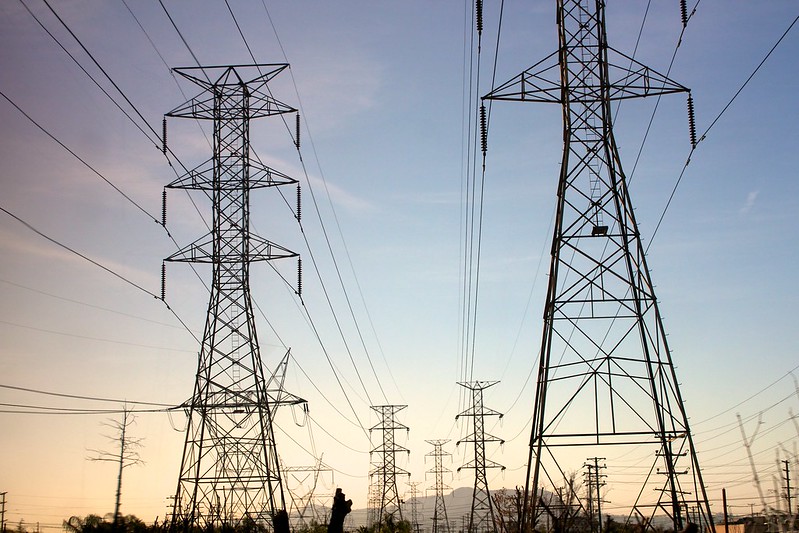By Claudia Fernandez (2017 Summer Intern)
 Last week, Sabin Center for Climate Change Law staff and interns toured the Javits Center’s 6.5-acre green roof (shown left), which was installed in 2013 as part of a $463 million renovation. The second-largest green infrastructure project in the U.S., the roof was intended to make the Javits Center more sustainable and improve its environmental footprint. According to President and CEO Alan Steel, while the Javits Center’s primary goal is “to generate new business and create employment opportunities” in New York City, it must do so “sustainably,” achieving its “primary goal while reducing the impact of the building and its operations on the community’s health and environment.” The green roof is a key part of this. It has delivered many benefits, both for the building and the surrounding community, particularly in terms of climate change mitigation and adaption.
Last week, Sabin Center for Climate Change Law staff and interns toured the Javits Center’s 6.5-acre green roof (shown left), which was installed in 2013 as part of a $463 million renovation. The second-largest green infrastructure project in the U.S., the roof was intended to make the Javits Center more sustainable and improve its environmental footprint. According to President and CEO Alan Steel, while the Javits Center’s primary goal is “to generate new business and create employment opportunities” in New York City, it must do so “sustainably,” achieving its “primary goal while reducing the impact of the building and its operations on the community’s health and environment.” The green roof is a key part of this. It has delivered many benefits, both for the building and the surrounding community, particularly in terms of climate change mitigation and adaption.
At this point, some readers may be wondering, what exactly is a green roof? In simple terms, it is a roof that has been partially or completely covered with plants, making it “green.” Green roofs are typically composed of a waterproofing layer, filter cloth, growing medium, and plants. The Javits Center’s green roof is planted with a specially-made mix of 14 different types of sedum, which are well suited to the local climate, able to withstand both hot summers and cold wet winters. It is irrigated only a few times a year and does not require annual reseeding.
A key goal of the Javits Center’s green roof was to increase the building’s energy efficiency. Green roofs can help to save energy in the summer as they absorb significantly less heat than regular blacktop and thus allow the building to be cooled more efficiently. In the winter, green roofs have been found to prevent heat loss by altering the microclimate above the roof and reducing wind speeds. At the Javits Center, the green roof (along with other retrofitting projects) has contributed to a 26% decrease in annual energy consumption, saving the center over $2 million in energy costs since 2013. This money has been used to fund new sustainability programs which have, in turn, further reduced energy consumption and costs. For example, the center has invested in a system that diverts hot air from its computer server rooms to other areas, reducing heating needs in winter. Through this and other measures, the Center has been able to reduce its climate impacts, avoiding the emission of 4,660 metric tons of carbon dioxide equivalent between 2013 and 2016.
The Javits Center’s green roof is also thought to have helped mitigate the Urban Heat Island (UHI) effect. In broad terms, the UHI effect refers to the fact that urban areas tend to experience higher temperatures than rural locations, due to the concentration of asphalt and concrete which trap heat. According to one report, New York City is, on average, 2.7 degrees hotter than the surrounding rural areas during the summer. The problem is exacerbated by population density (which results in higher energy use which, in turn, leads to more excess heat being released), the “canyon effect” (which occurs when heat is trapped in between tall buildings), and a lack of evapotranspiration (the process by which water is reintroduced into the atmosphere by evaporation or transpiration from plants ). Green roofs have been shown to increase evapotranspiration, helping to cool the surrounding atmosphere.
The types of plants used on a green roof can significantly impact its effectiveness in mitigating the UHI effect. Roofs covered in sedum, for example, have been shown to be less effective than those featuring other plants. Despite its use of sedum, however, initial results from the Javits Center’s green roof are promising. A study by researchers from Drexel University, based on two years of climatic data from the Javits Center (including temperature, radiation, evapotranspiration, and wind data) found that the roof “not only altered the climatic conditions above the [Javits Center], but also had a measurable impact on the climatic profile of the areas immediately surrounding it.”
Drexel University researchers have also been studying the roof’s impact on storm water runoff. Generally, when rainwater hits impervious surfaces such as concrete it “runs off” across those surfaces, picking up pollutants and eroding infrastructure. This is a pressing issue in New York City, where 72% of surfaces are impervious. Runoff from these surfaces flows into the city’s combined sewage system, where it mixes with wastewater from homes and businesses on its way to treatment plants. During heavy rain or snow storms, plants may be overwhelmed by large amounts of runoff, triggering bypass events and leading to the discharge of untreated waste directly into waterways.
Green roofs are seen as one way of addressing this issue as impervious surfaces are replaced with water-absorbing plants and filters, reducing runoff and easing the burden on the city’s water infrastructure. This has certainly been the experience at the Javits Center, with studies estimating that its green roof absorbs 81% of the rainwater that hits it, reducing runoff by 6.8 million gallons annually. Similar reductions at other buildings could go a long way towards addressing New York’s runoff problem. Recognizing this, the New York Department of Environmental Protection (DEP) has set a goal of replacing 4% of New York City’s impervious surfaces with green infrastructure by 2020, and established tax abatement and grant programs to incentivize the construction thereof on private property. Unfortunately, as Justin Gundlach recently wrote, these programs have not been used as much as the DEP anticipated. After seeing the numerous benefits provided by the Javits Center’s green roof, we hope this will change, and more private property owners will be inspired by its experiences to develop their own green infrastructure projects.




